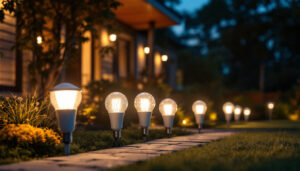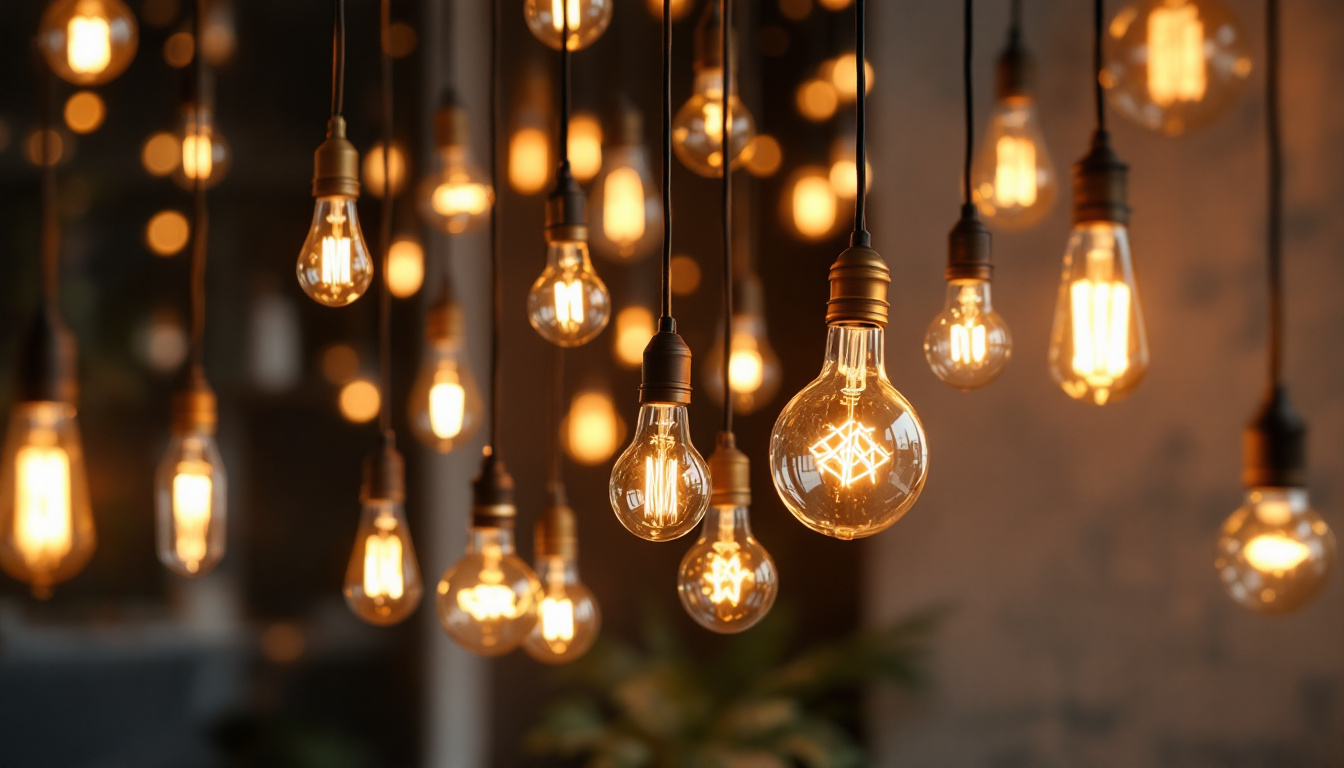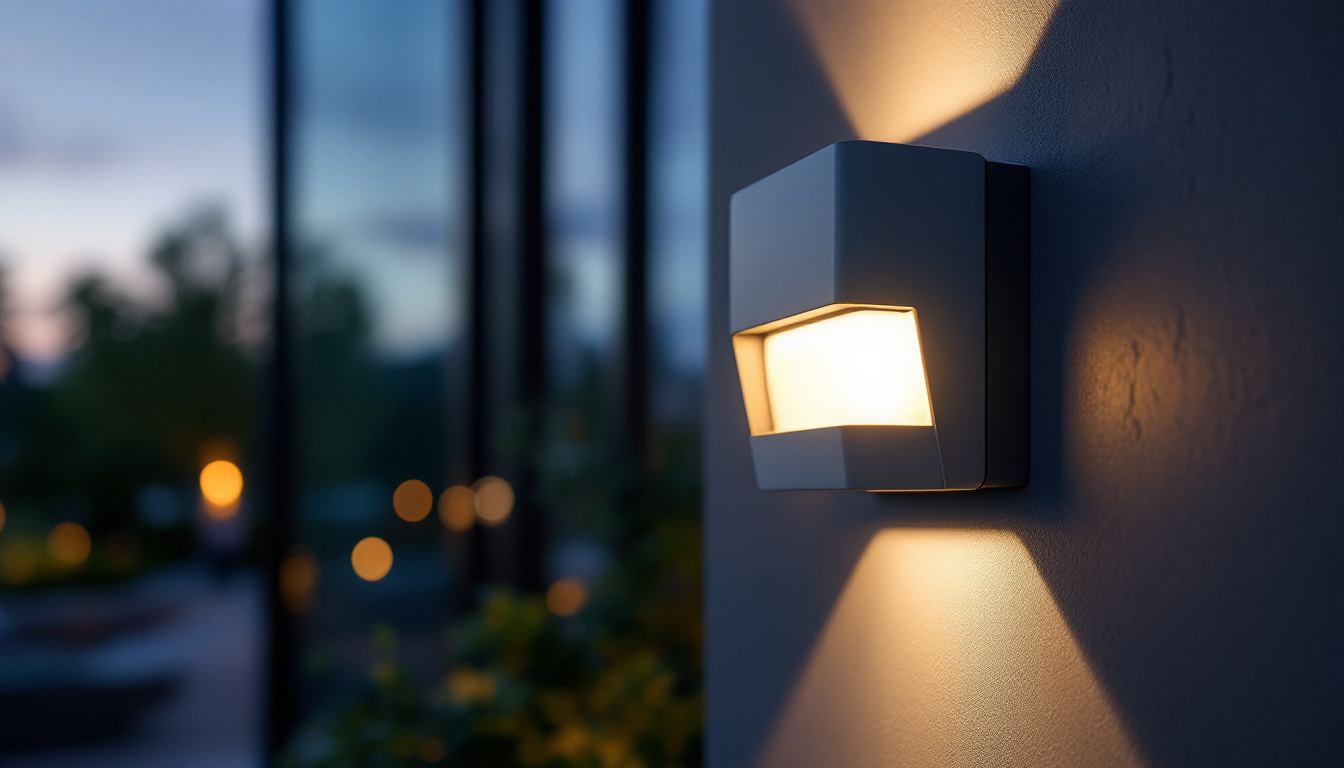

As a lighting contractor, understanding the various types of electric outlets is crucial for ensuring efficient installations and meeting client needs. This article will break down the most common types of outlets, their specifications, and applications, all in a concise format that allows for quick comprehension.
Electric outlets serve as the interface between electrical wiring and electrical devices. They come in various types, each designed for specific applications and electrical loads. Familiarity with these outlets not only enhances safety but also improves the quality of installations.
In the realm of lighting, different outlets can significantly impact the performance and functionality of lighting systems. This guide will cover the most prevalent types of electric outlets that lighting contractors should be aware of.
One of the most common types of outlets is the standard 120-volt receptacle, which is widely used in residential settings. These outlets are designed to accommodate a variety of devices, from lamps to small appliances, making them versatile for everyday use. However, it’s crucial for contractors to understand the limitations of these outlets, especially when it comes to the total load they can handle. Overloading a standard outlet can lead to tripped breakers or even electrical fires, underscoring the importance of proper installation and load management.
In addition to standard outlets, there are also specialized outlets such as GFCI (Ground Fault Circuit Interrupter) and AFCI (Arc Fault Circuit Interrupter) outlets. GFCI outlets are essential in areas where moisture is present, such as kitchens and bathrooms, as they protect against electrical shocks by cutting off power when a ground fault is detected. Meanwhile, AFCI outlets are designed to prevent electrical fires caused by arcing faults, making them ideal for bedrooms and living areas. Understanding the specific applications and requirements for these specialized outlets can greatly enhance the safety and efficiency of electrical installations, ensuring that lighting systems operate seamlessly while adhering to safety codes and regulations.
The standard duplex outlet is perhaps the most recognizable type of outlet. It features two receptacles, allowing for multiple devices to be plugged in simultaneously. Typically rated for 15 or 20 amps, these outlets are suitable for most residential and commercial lighting applications.
Duplex outlets are versatile and can accommodate a variety of plugs, making them ideal for general lighting and small appliances. They are often installed in living rooms, bedrooms, and offices, providing convenient access to power. Additionally, many duplex outlets now come with built-in USB ports, catering to the increasing number of devices that require USB charging. This modern adaptation not only enhances functionality but also reduces clutter, as users can charge their smartphones, tablets, and other gadgets without needing bulky adapters.
Ground Fault Circuit Interrupter (GFCI) outlets are designed to protect against electrical shock by monitoring the flow of electricity. If a ground fault is detected, the outlet cuts off power almost instantaneously. This feature makes GFCI outlets essential in areas where moisture is present, such as kitchens and bathrooms.
For lighting contractors, installing GFCI outlets in outdoor lighting fixtures or near water sources is critical. These outlets help ensure safety and compliance with electrical codes, which often mandate their use in specific locations. Furthermore, GFCI outlets are equipped with a “test” and “reset” button, allowing users to easily check their functionality. Regular testing is recommended to ensure that the outlet is working properly, providing peace of mind for homeowners and businesses alike. In addition, some GFCI models offer weather-resistant features, making them suitable for outdoor installations where exposure to the elements is a concern.
Arc Fault Circuit Interrupter (AFCI) outlets serve a different purpose than GFCI outlets. They are designed to detect arc faults, which can occur due to damaged or frayed wiring. By interrupting the circuit, AFCI outlets help prevent electrical fires, making them particularly valuable in residential settings.
Lighting contractors should consider using AFCI outlets in areas where lighting circuits are installed, especially in bedrooms and living areas. This proactive approach enhances safety and can be a selling point for clients concerned about fire hazards. Additionally, AFCI technology has evolved, with newer models capable of distinguishing between harmless arcs and potentially dangerous ones, reducing the likelihood of nuisance tripping. This advancement not only increases reliability but also ensures that homeowners can enjoy their electrical systems without frequent interruptions. As awareness of electrical safety continues to grow, the demand for AFCI outlets is likely to increase, making them an essential component of modern electrical installations.
USB outlets have gained popularity in recent years, providing a convenient way to charge devices without the need for an adapter. These outlets typically feature one or more USB ports alongside standard receptacles, making them ideal for modern homes and offices.
For lighting contractors, integrating USB outlets into lighting designs can enhance functionality. Consider installing them in areas where charging devices is common, such as near desks or in living rooms. This adds value to the installation and meets the evolving needs of clients. Furthermore, the rise of mobile devices and smart gadgets means that having readily accessible charging options can significantly improve user experience. Homeowners appreciate the convenience of being able to charge their smartphones, tablets, and other devices without the clutter of multiple adapters and cords, which can often lead to a more organized and aesthetically pleasing environment.
Smart outlets offer advanced features that allow users to control their lighting and devices remotely, often via smartphone apps or voice commands. These outlets can be programmed for schedules, energy monitoring, and integration with home automation systems.
As the demand for smart home technology continues to rise, lighting contractors should familiarize themselves with smart outlet installations. Incorporating these outlets into lighting designs not only enhances convenience but also positions contractors as forward-thinking professionals in the industry. Additionally, smart outlets can provide energy-saving benefits by allowing homeowners to monitor their energy consumption and reduce waste. This feature is particularly appealing to environmentally conscious clients who are looking to lower their carbon footprint while enjoying the conveniences of modern technology. With the ability to control devices from anywhere, smart outlets also add an extra layer of security, allowing users to simulate occupancy by scheduling lights to turn on and off when they are away from home.
While most residential outlets are rated for 120 volts, 240-volt outlets are essential for higher-powered appliances and equipment. These outlets are typically used for devices such as electric dryers, ovens, and certain types of lighting systems that require more power.
Lighting contractors may encounter 240-volt outlets in commercial settings or specialized residential applications. Understanding their installation requirements and safety considerations is vital for ensuring compliance and functionality. Moreover, the installation of 240-volt outlets can open up opportunities for contractors to work on more complex projects, such as home workshops or outdoor lighting systems that utilize high-intensity discharge (HID) lamps. These outlets can also support electric vehicle (EV) charging stations, which are becoming increasingly popular as more homeowners transition to electric vehicles. By being knowledgeable about the specifics of 240-volt installations, contractors can not only meet the immediate needs of their clients but also future-proof their services in an evolving market that increasingly values sustainability and innovation.
The National Electrical Manufacturers Association (NEMA) establishes standards for electrical devices, including outlets. NEMA ratings indicate the specific configurations and electrical ratings of outlets, helping contractors choose the right type for their projects.
Common NEMA configurations include 5-15R for standard 15-amp outlets and 6-15R for 240-volt applications. Familiarity with these ratings allows lighting contractors to select appropriate outlets based on the electrical load and application requirements.
Tamper-resistant outlets are designed with built-in shutters that prevent foreign objects from being inserted into the receptacle. These outlets are particularly important in homes with young children, as they reduce the risk of electrical shock.
Lighting contractors should consider specifying tamper-resistant outlets for residential projects, particularly in areas where children may have access. This small but significant detail enhances safety and can be a key selling point for parents.
Ensuring that installations meet local electrical codes is paramount for lighting contractors. These codes dictate the types of outlets that can be used in specific locations, as well as installation practices to ensure safety and functionality.
Contractors should stay updated on local regulations and best practices. This knowledge not only helps avoid costly fines but also builds trust with clients who expect professional and compliant work.
Before selecting outlets for a project, contractors must perform load calculations to determine the appropriate amperage and voltage requirements. This step is crucial for preventing overloads and ensuring that the electrical system can handle the demands of the installed lighting.
Understanding how to calculate loads based on the types of lighting fixtures and devices being used is a skill that every lighting contractor should master. This knowledge is essential for delivering safe and efficient installations.
As smart home technology becomes increasingly prevalent, the demand for smart outlets is expected to rise. These outlets not only offer convenience but also contribute to energy efficiency by allowing users to monitor and control their energy consumption.
Lighting contractors should consider expanding their skill set to include smart outlet installations and integrations. Staying ahead of this trend will position contractors as leaders in the industry and attract tech-savvy clients.
With growing awareness of environmental issues, there is a push towards more sustainable electrical solutions. Outlets that promote energy efficiency, such as those with built-in timers or energy monitoring capabilities, are likely to gain popularity.
Contractors can enhance their offerings by incorporating energy-efficient outlets into their lighting designs. This not only benefits the environment but also appeals to clients seeking to reduce their energy costs.
Understanding the various types of electric outlets is essential for lighting contractors. From standard duplex outlets to advanced smart and USB outlets, each type serves a unique purpose and has specific applications. By familiarizing themselves with these outlets, contractors can enhance their installations, ensure safety, and meet the diverse needs of their clients.
As technology continues to evolve, staying informed about new trends and regulations will be crucial for success in the lighting industry. By adapting to these changes, lighting contractors can position themselves as knowledgeable professionals ready to tackle any project.
Now that you’re equipped with the knowledge of electric outlets for your lighting projects, take the next step with LumenWholesale. We provide lighting contractors like you with top-quality, spec-grade lighting products at unbeatable wholesale prices. Our extensive selection is designed to meet the highest industry standards, ensuring you get reliable, high-performance lighting for every project. Plus, with free shipping on bulk orders, you can stock up on premium lighting without the worry of hidden fees or compromises. Don’t let inflated markups dim your business’s potential. Experience the perfect blend of quality, affordability, and convenience. Wholesale Lighting at the Best Value is just a click away.

Discover essential insights for lighting contractors on optimizing outdoor lighting projects.

Discover why light bulb decoration is a crucial element for lighting contractors.

Discover why purchasing sensors and timers in bulk from local distributors might not be the best choice.

Discover how Wallpack is revolutionizing the lighting industry with innovative designs and cutting-edge technology.
Get notified when NEW deals are released.
Optimize your budget with wholesale discounts.
Only top-quality, specification-grade lighting products.
No additional costs at checkout - what you see is what you pay.
We understand the unique needs of contractors.